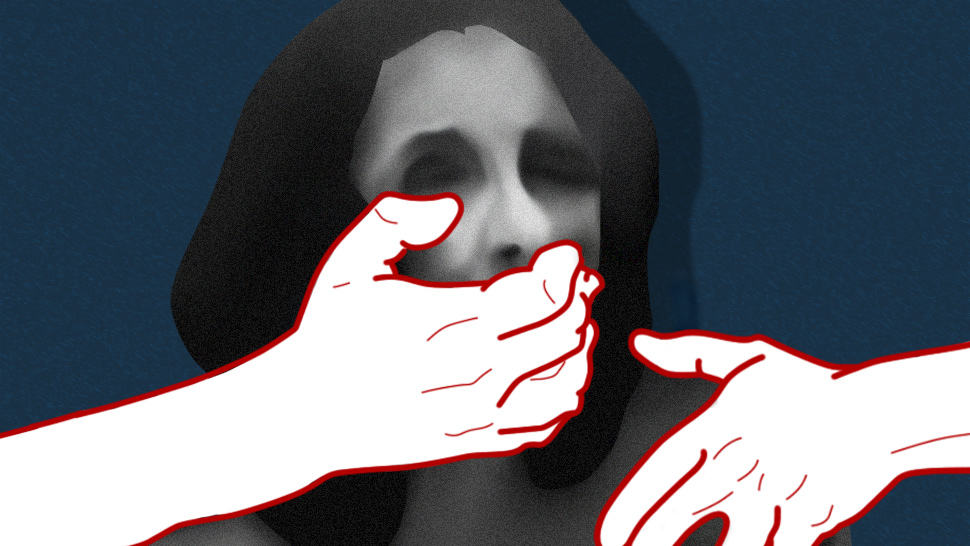The Most Notorious Rape and Slay Cases that Shocked the Philippines

One person is raped in the Philippines every hour. This is based on police records cited by the Center for Women’s Resources in 2017. Sadly, this figure could just be a fraction of the many victims of rape who are incapacitated to speak out. Sixty percent of rape victims don’t acknowledge that they had been raped because of fear, trauma, and shame.
Rape in the Philippines has become so common, that it seems to have desensitized us—even if rape these days is just as gruesome, monstrous, and revolting as rape in the past. Yet, rape cases no longer repulse us to a point that these become daily headlines for months; perhaps there’s just too many of them. There was a time when people used to remember the victims’ names.
The following are just some of the most unspeakable rape-slay cases that have shocked the Philippines.
The Silawan Rape Case (2019)
In March 2019 in Lapu-Lapu City in the Visayas, 16-year-old Christine Lee Silawan asked permission from her mother if she could go to church that evening. She was a member of the church ministry that collected donations from churchgoers. Her mother allowed her to go, thinking that she would return home after an hour. She never did.
The next day, a body of a girl about the same age as Silawan was found in a field, the skin and muscles on her face carved clean right down to the bone, revealing the skull, eyeballs still intact. She also had over 30 stab wounds on different parts of her body, some of these were defense wounds. Photos of the gruesome scene quickly went viral on social media. People learned that bone was really white.
Police had a hard time identifying the victim because of what was done to her face. Eventually, they identified her as Christine based on DNA results. Her mother was inconsolable.
Nearly a month later, police arrested 42-year-old Renato Payupan Llenes, who confessed to the crime. According to Llenes, he posed as a different person on social media and lured Silawan to meet with him. He became obsessed with Silawan, and when he learned that she had relationships with other boys, he became jealous and enraged, so he killed her.
“I used a dummy Facebook account to lure Christine. We chatted frequently until we became a couple on Facebook,” said Llenes in a report by the Inquirer. “We agreed to meet personally for the first time on March 10 at Sacred Heart Parish in Lapu-Lapu City. We fought on our way (to Barangay Bangkal) and that’s when I killed her.”
Llenes also detailed how he was inspired by the Momo Challenge that urged children to commit various crimes and self-harm.
When Llenes was asked where he learned to carve skin and muscle off the bone, he answered that he learned it on social media sites such as YouTube and Facebook. Llenes used scissors to remove skin and muscle off Silawan’s face, revealing her skull with her eyeballs still intact.
Prior to Llenes’ confession, police had arrested a 17-year-old male suspect. According to Llenes, he came forward because he was haunted by his conscience and that he couldn’t bear the fact that another person would suffer the consequences of his crime.
Vizconde Massacre (1991)
The Vizconde Massacre is one of the most high-profile rape and murder cases in the Philippines. It occurred on June 30, 1991 when three members of the Vizconde family were brutally murdered in their home in B.F. Homes, Parañaque.
The victims were Carmela Vizconde, 19, Jennifer Vizconde, 6, and their mother, Estrellita Vizconde, 49. Lauro Vizconde, the father and husband of the victims, was away on a business trip in the U.S. Estrellita suffered thirteen stab wounds.
Carmella was raped before she was murdered, sustaining 17 stab wounds. Jennifer, who was only 6 years old, had 19 stab wounds. The massacre left the nation in disbelief. There had been no leads in the case until, in 1995, Jessica Alfaro stepped forward as a self-described key witness to the crime.
Alfaro’s testimony sent shockwaves around the nation: she implicated the sons of some of the country’s wealthiest and powerful families. Among the accused were Hubert Webb, Antonio Lejano II, Hospicio Fernandez, Michael Gatchalian, Miguel Rodriguez, Peter Estrada, Joey Filart and Artemio Ventura. Webb is the son of former senator Freddie Webb.
According to Alfaro’s testimony, she was friends with the suspects, and they were having a “drug session” when Hubert Webb allegedly decided to rape Carmela Vizconde. Alfaro said that when they got to the residence, Webb instructed her to come with him because Estrellita would only allow Carmela to entertain female guests. Once in the residence, Alfaro claimed that Webb followed Carmela to the dining room, so she went out to have a smoke. From outside the house, Alfaro said she saw Lejano and Ventura take a knife from the kitchen, and proceeded to kill the mother first.
Alfaro further explained that after Estrellita was killed, Webb proceeded to rape Carmela, but Jennifer woke up and saw what he was doing to her sister, so she jumped on Webb and bit him. Alfaro reported that Webb threw Jennifer across the room to a wall, then stabbed her repeatedly. Alfaro’s testimonies were corroborated by other witnesses.
On the other hand, Webb's legal team argued that Alfaro’s testimony should not be considered reliable because she admitted that she, too, was intoxicated during the events of the murder.
Almost a decade after the massacre, on January 6, 2000, the court ruled that Webb and company were guilty beyond reasonable doubt.
After another decade, In December 2010, the Supreme Court reversed the lower court’s decision, ruling that the prosecution failed to prove that Webb and company were guilty beyond reasonable doubt. Webb was acquitted and then released from prison right after.
The Supreme Court decision broke the heart of Lauro Vizconde, who, since the murder of his family, dedicated the rest of his life with the group Volunteers Against Crime and Corruption. Lauro passed away in 2016.
The Chiong Murders (1997)
The Chiong murder case is one of the most controversial rape-slay cases in the Philippines because of the amount of publicity it gained. Rumors surrounded the case, including one that claims that the sisters were not murdered, but are actually still alive and living in Canada. Another strange twist in the case is the seemingly solid alibi of the lead suspect in the case.
On July 17, 1997, sisters Marijoy and Jacqueline Chiong went missing. According to the prosecution, Jacqueline and Marijoy were waiting for a ride home when they were forced into a car at about 10 p.m. on July 16, 1997 at the Ayala Center Cebu.
According to the Chiong family, Marijoy and Jacqueline were brought to a house in Barangay Guadalupe, Cebu City, where they were raped. Then, they were transported to Carcar, where they were again raped. Two days later, Marijoy's body, bruised and raped, was found at the bottom of a ravine in Carcar. Jacqueline's remains are missing to this day.
For some reason, the prosecution identified Francisco “Paco” Larrañaga, as the mastermind of the crime. In 2004, Larrañaga, along with six other men, were convicted of raping and murdering the Chiong sisters.
But Larrañaga had an ironclad alibi: he was not in Cebu but in Quezon City the whole time, attending his classes in school. The school logs actually show his attendance, which was corroborated by his classmates and teachers. He even answered an exam.
Give Up Tomorrow (2011) is an award-winning documentary that purports to show how the trials, from the lower court to the Supreme Court, were mishandled, and how the state witness for the prosecution was unreliable. Despite the seeming lack of evidence, Larrañaga and six other men were placed on Death Row.
Larrañaga holds dual citizenship as a Spanish-Filipino. He was extradited to for Spain in 2009, and has since sought help from the entire European Union for his case. Spain’s royal family appealed to the Philippines to admit a mistrial, while the Spanish government and the European Union lobbied for the Philippines to declare Larrañaga and his co-accused innocent.
Some people consider Paco Larrañaga lucky that he is a citizen of the powerful and influential European Union, but for the six of his co-accused, they remain in prison to this day.
The Jalosjos Case (1996)
Romeo Jalosjos is a convicted child rapist. In June 1996 when he committed the crime, he was congressman of Zamboanga del Norte.
In 46 pages, the Supreme Court laid down its decision of convicting Jalosjos:
“For all we know, Jalosjos may have found a distinct and complete sexual gratification in such kind of libidinous stunts and maneuvers, Jalosjos may have reached that point where he would rather have sex with a girl of tender age, who could even pass as his granddaughter.” “Topped with the thrusting motions by Jalosjos, the resulting pain by the victim in her sex organ was no doubt a consequence of consummated rape,” read part of the Supreme Court’s decision.
In December 1996, just before the government could issue a warrant of arrest at the Batasan, Jalosjos fled. He hid in a remote island near Bataan. Agents of the National Bureau of Investigation eventually tracked him down.
In 1997, the Supreme Court ruled with finality the guilty verdict on Jalosjos for the multiple statutory rape of an 11-year-old girl. He was given a life sentence.
In 2007, then-president Gloria Macapagal Arroyo granted Jalosjos clemency and commuted his sentence to 16 years only. He was released from prison in 2009. In 2017, he petitioned president Duterte to grant him a full pardon so he can run again for public office.
Lucila Lulu Murder (1967)
Lucila Lu was the original “Chop-chop Lady,” a term that described women whose body parts were dismembered and scattered across different parts of the city or province to cover up the identity of the victim.
Sometime in the early ‘60s, Lu left her hometown in Candaba, Pampanga to seek her fortunes in Manila, where she found a job as a waitress. When she saved up enough money from her waiting tables, she put up her own salon at Manila’s red light district. Then, in 1967, she disappeared.
On May 28, the police discovered in Malabon a badly wrapped package that contained different body parts: a pair of legs, chopped into 4 pieces. The body parts were wrapped with newspaper that was dated May 14th. They were handed over to the police by garbage collectors, who reported that the package felt cold, as like frozen meat being defrosted. They knew it was a woman’s because of the well pedicured toenails.
A day later, a similar package was found on EDSA, near Guadalupe Bridge, this time containing a torso. Like the first one, it was wrapped in newspaper, but dated May 23.
The police concluded that these body parts had to be from one person, so they suspected that the hands they found in Recto Avenue a week earlier belonged was connected to these other body parts. Luckily, the police had Lulu’s fingerprints on file, which they got when she applied for police clearance years prior. They identified the body as Lulu’s.
Lucila Lulu’s case remains unsolved to this day. Her gruesome death led to the rise of urban legends and cautionary tales told to young girls so they come home early, lest they become the chop-chop lady.




